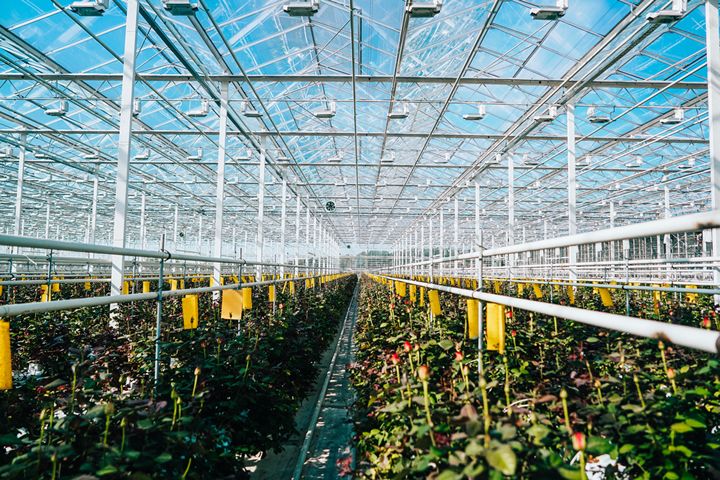From a weakened grid infrastructure to the rising and unpredictable cost of energy, farms, wineries and cannabis cultivators alike are faced with mounting pressure to produce more while minimizing operational costs and incorporating greener business practices.
 Top Benefits of Incorporating Demand Response into your Farm, Winery or Cannabis-Growing Operation
Top Benefits of Incorporating Demand Response into your Farm, Winery or Cannabis-Growing Operation

Jim Connolly, VP of Sales | Enersponse
Demand response programs incentivize electricity consumers, like those in the agriculture industry, to reduce or shift their power usage during peak demand periods. In return for participating, facilities receive payments. These programs help balance the supply and demand on the grid and improve reliability. Energy management is not just a desirable quality in the modern agricultural landscape—it's essential for ongoing success and sustainability in every growing operation. Yet, increasing power prices for resource-intensive operations persist, often resulting in negative implications to a grower's bottom line. From a weakened grid infrastructure to the rising and unpredictable cost of energy, farms, wineries and cannabis cultivators alike are faced with mounting pressure to produce more while minimizing operational costs and incorporating greener business practices.
Amidst these challenges lies a simple, powerful and often overlooked solution for the agricultural sector called demand response (DR). This advanced energy management tool offers a straightforward yet potent means to support sustainability and decarbonization and in some instances, even open new revenue streams through utility rebate and reimbursement opportunities.
The Challenge: Energy-Rigorous Processes in Farming, Wineries and Cannabis Cultivation
Farms: Agricultural operations are inherently energy-intensive, relying on constant access to power for a multitude of integral tasks. Irrigation systems, essential for maintaining crop health, often account for a significant portion of a farm's power consumption. To ensure the well-being of animals, livestock housing and ventilation systems require constant access to energy. Crop drying and cold storage are utility intensive as well, especially during harvest seasons.
Wineries: Due to the complex nature of the production process, wineries are among the most energy-exhaustive facilities in the agricultural arena. From machines for crushing and pressing grapes to fermentation, refrigeration and temperature control while barrel aging, every step of winemaking requires a significant amount of power to execute.
Cannabis: Indoor cannabis cultivation is well-known for its massive energy demands, due to the marijuana plant’s need for at least 6-12 hours of direct sunlight per day. This takes the form of extensive lighting systems, especially in areas with frequent bad weather. Marijuana plants also have a temperature sensitivity that requires complex HVAC systems for climate control, as well as dehumidification and air filtration equipment. These energy-intensive processes not only contribute to high operational costs but also pose significant challenges in terms of sustainability and environmental impact.
The Solution: Elevated Agricultural Energy Management with Demand Response
New Streams of Revenue: Participating in DR energy-reduction events benefits utilities and system operators by supporting grid stabilization and, in turn, they will offer rewarding financial incentive opportunities to users. In addition, DR program enrollment enables cultivators access to utility rebates that can offset or completely cover the cost of upgrades to system controls, updates and occasionally, even a new supervisory control and data acquisition (SCADA) system.
Enhancing Agricultural Efficiency with Demand Response
By integrating DR into agricultural operations, growers reap the benefits of budget-friendly utility bills, profitability, environmental sustainability and grid reliability. Whether the objective is lower operational costs or greener farming practices, DR provides a clear pathway for a variety of agricultural goals.
Reducing Emissions: By ensuring that processes are only utilizing power when and where it is needed, DR helps farmers curb their reliance on fossil fuels and align with important decarbonization and energy-saving efforts. Beyond this, certain DR providers make Environmental, Social and Governance (ESG) compliance effortless through intuitive dashboards with detailed energy and greenhouse gas (GHG) reporting plus up-to-date data on overall program revenue and bill savings.
Grid Stability: Uninterrupted energy supply is crucial for growing operations. Power disruptions to vital refrigeration, temperature control and lighting processes can result in crop spoilage—making grid stability an agricultural imperative. DR programs monitor real-time grid conditions along with other key factors, providing growers with rich data to strategically schedule energy-intensive tasks during low-demand periods while simultaneously alleviating grid strain to ensure a continuous power supply.
Jim Connolly, VP of Sales
 Jim has held a variety of roles in energy sales and sales leadership, working with both energy brokers and direct sale customers, since the inception of the deregulated energy markets. He has deep experience and knowledge in Demand Response, as well as both Power and Natural Gas supply, to Commercial and Industrial customers. His geographic experience includes all deregulated markets in both the US and Canada. Jim is passionate about solving customer needs and creating a best-in-class customer experience.
Jim has held a variety of roles in energy sales and sales leadership, working with both energy brokers and direct sale customers, since the inception of the deregulated energy markets. He has deep experience and knowledge in Demand Response, as well as both Power and Natural Gas supply, to Commercial and Industrial customers. His geographic experience includes all deregulated markets in both the US and Canada. Jim is passionate about solving customer needs and creating a best-in-class customer experience.
The content & opinions in this article are the author’s and do not necessarily represent the views of AgriTechTomorrow
Comments (0)
This post does not have any comments. Be the first to leave a comment below.
Featured Product

